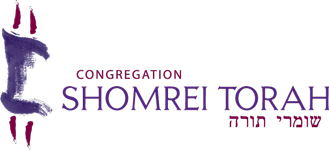By Rabbi George Gittleman | Santa Rosa Press Democrat
So what do a Sonoma County rabbi and Seabiscuit have in common? The answer actually goes back to my childhood experiences. Reading the book and seeing the film about the famous race horse brought back many memories and inspired me to reflect on how we mere mortals can realize our potential as human beings created in the divine image.
I grew up in Louisville, Ky., where horses are kings. I first climbed on a horse when I was six, and spent most of my teen-age years riding, including a short stint working thoroughbreds off the track. I come from a horse racing family.
One of my favorite outings as a child was going to the track with my father. By the time I was able to drive, I was skipping school to go to Churchill Downs when the track was running. I didn’t go for the betting — although any kid who was tall enough to see over the counter could place a wager. I went to watch the horses run. (Still, there was the time I met my Dad at a betting window. “What are you doing here?” he asked. “The same thing you’re doing here,” I responded.)
There is a mystique about thoroughbred horses that seemed as natural to me as my mother’s milk. For me, watching the horses run was almost holy. How could so much grace, power and beauty be captured in one living being? So, on a very personal level, the story of Seabiscuit spoke to me.
But it is not just my personal experience that makes it so moving.
In a war-torn world, it’s nice to see a small miracle happen to real people.
In a world that often seems hopeless, we need true stories like Seabiscuit to remind us of the human potential in all of us. That to me is the true power of the story: its universal message of hope and redemption, the same message central to the Jewish Holy Day season.
Rosh Hashanah began Friday night, and Yom Kippur follows 10 days later. They are arguably the two most important holy days in the Jewish year. Reading the book and then watching the film, I couldn’t help but think of the Holy Days — in part because of all the sermons I had to write, but mostly because the message of Seabiscuit is the central theme of these holy of holy days.
What is that message? That there is no point of no return, that teshuvah (a turning back to our godly self) is always possible for all of us. That to me is what makes the Jewish Holy Day cycle so compelling, and the story of Seabiscuit so powerful.
Think about it. You have a nearly broken horse, a jockey abandoned at the age of 12, a lonely cowboy from another era, a wealthy man broken by the loss of his son and subsequent divorce.
On the surface, one would think there is little hope for these folk but that is not how the story ends. Instead, through hard work, a little luck, goodwill and a lot of faith, these broken-down people and this nearly broken horse became champions.
The theme of “broken made whole” is something we can all relate to. In truth, it is really the “brokenness” that we really connect with. We know what it is to hurt; we know what it is to fail. What is really tough for us to believe is that we can be champions.
And that precisely is the message of the Jewish New Year (Rosh Hashana) and Day of Atonement (Yom Kippur). Yes, we are human; yes, we make mistakes, but in our very nature is the potential for greatness.
The Talmud, a series of ancient sacred Jewish books, teaches that it would have been enough for God to make us in God’s image. What a greater gift it is for us to know that God’s image, a spark of the divine, rest in each and every one of us. The Jewish Holy Days tell us to recognize our “humanness” and face our failings but also to embrace our potential for godliness.
This is an essential message not just for Jews but for all people. Human nature’s potential for godliness is a beacon of hope in a world often marred by godlessness and thus hopelessness.
How ironic that through the story of a racehorse, we learn about our potential as human beings created in the divine image.
